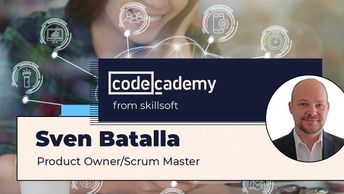IT Professional Curricula Internet and Network Technologies Solution Area Cloud Computing DP-100: Designing and Implementing a Data Science Solution on Azure
Machine Learning uses real data to train algorithms that can be used for anomaly detection, computer vision, and natural language processing.
In this course, you'll learn about datasets and how to manipulate data for them. Next, you'll learn the difference between labeled and unlabeled data and why some AI models require labeled data. You'll examine the features that should be used for a selected dataset. Next, you'll learn about the types of machine learning algorithms that are available, including regression algorithms, classification algorithms, and clustering algorithms. Finally, you'll explore the difference between supervised and unsupervised machine learning models.
This course is one in a collection that prepares learners for the Designing and Implementing a Data Science Solution on Azure (DP-100) exam.
In this course, you'll learn about datasets and how to manipulate data for them. Next, you'll learn the difference between labeled and unlabeled data and why some AI models require labeled data. You'll examine the features that should be used for a selected dataset. Next, you'll learn about the types of machine learning algorithms that are available, including regression algorithms, classification algorithms, and clustering algorithms. Finally, you'll explore the difference between supervised and unsupervised machine learning models.
This course is one in a collection that prepares learners for the Designing and Implementing a Data Science Solution on Azure (DP-100) exam.
| Objectives |
|---|
DP-100 - Azure Data Scientist Associate: Machine Learning
|


